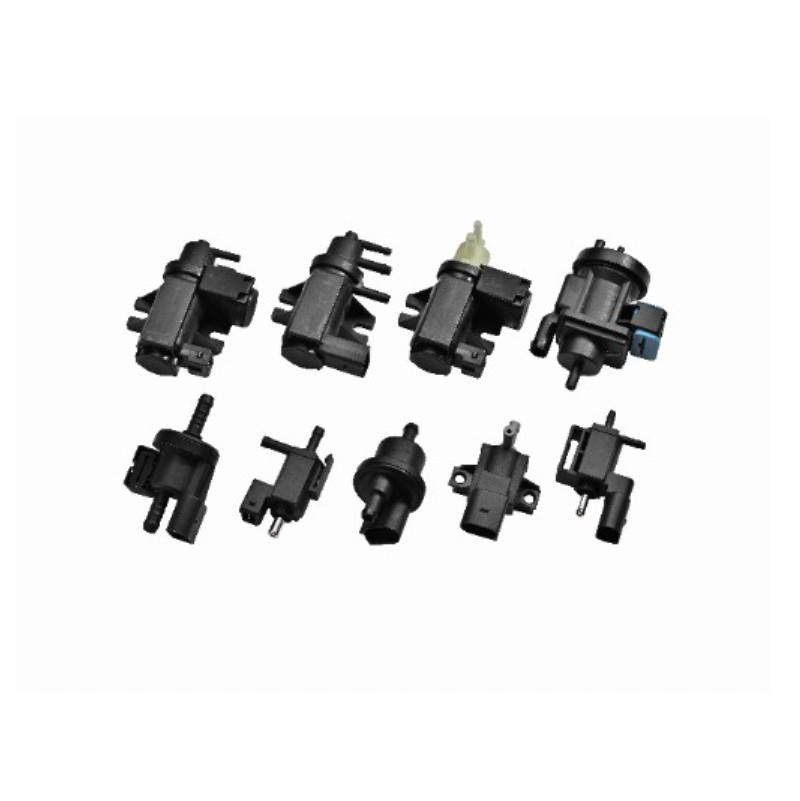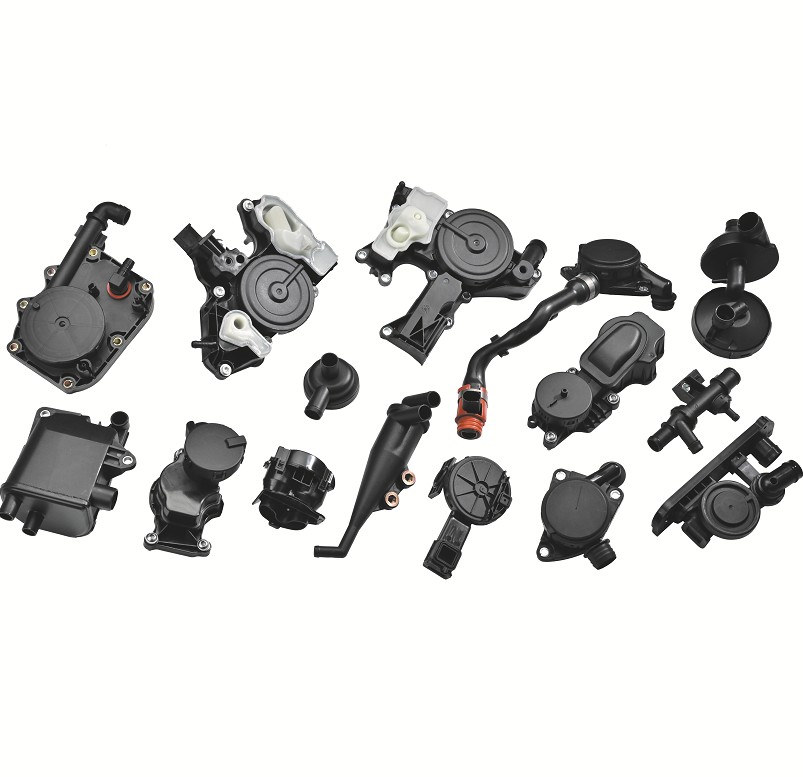The PCV valve (positive crankcase ventilation valve) regulates the flow of gases within the crankcase to ensure proper engine operation. Its operating principle is based on the intake manifold vacuum level. By controlling the valve's opening and closing, it regulates the amount of blowby gas re-introduced into the intake manifold.
Specifically, when the engine is running at low or normal speeds, the PCV valve opens slightly, reducing the intake of blowby gases. During high speeds or during backfire, the valve opens wider, increasing the intake of blowby gases while also shutting off ventilation in the event of backfire to prevent engine damage.

When the engine is not running, the PCV valve remains closed due to its own mass and the force of the spring, effectively preventing the backflow of outside air and exhaust gases into the crankcase and maintaining a relatively stable environment within the crankcase. When the engine is started and running, vacuum is generated in the intake manifold. The suction force at the upper end of the PCV valve overcomes the spring force, reducing the gap between the conical valve and the valve body, allowing crankcase gases to enter the intake manifold.
The PCV valve typically consists of a valve body, valve, valve cover, and spring. These components work together to precisely control the flow of gases within the crankcase. This design not only helps maintain crankcase pressure balance but also prevents oil leaks and wear on engine components. Furthermore, the PCV valve prevents backflow or backfire, protecting the engine from unexpected mechanical hazards.
What are the maintenance and inspection methods for the PCV valve?
PCV valve maintenance and inspection methods primarily include the following:
Vacuum test: With the engine idling, remove the PCV valve from the cylinder head hose and feel for a strong vacuum at the connection. If a strong vacuum is felt, the PCV valve is functioning properly; if not, it may be clogged or leaking.
Tightness test: Use an air pump to pressurize the forced ventilation hose from the engine intake system to the crankcase. Normally, there should be no air flow after pressurization. Otherwise, the PCV valve needs to be replaced.
Clearance Check: With the engine running, remove the forced ventilation hose from the crankcase and block the end with your finger. If you feel a vacuum, the valve is operating normally. Alternatively, place a piece of cardboard in the hose. If it feels suction after one minute, the PCV valve is unobstructed.
Stuck Check: Gently shake the PCV valve. If you hear a sound, it's not stuck and is operating normally. If there is no sound, it may be stuck.
Opening Amount Check: Check the opening of the PCV valve during starting and idling. If the vehicle starts normally with a blocked PCV valve, the valve is open too much and needs to be replaced. If the PCV valve is blocked during normal operation, the engine speed should decrease.

Cleanliness Check: Excessive dirtiness can affect the PCV valve's function and requires cleaning or replacement. To check, allow the engine to idle and remove the PCV valve from the cylinder head hose to check for blockage. If you feel a strong vacuum at the connection, the valve is operating normally. After reinstalling the PCV valve, remove the crankcase intake manifold from the air filter and cover the manifold opening with a piece of tissue paper for about one minute. If the tissue paper is sucked toward the manifold opening, the valve is functioning properly. Stop the engine, remove the PCV valve, and shake it manually until you hear a click. The valve is functioning properly.
Appearance Inspection: Check the color and appearance of the PCV valve. Normally, it should be smooth, free of oil and dirt, and metallic in color. If oil or dirt appears on the PCV valve surface, or if it has turned black, the valve is aged or damaged and needs to be replaced. Additionally, if oil drips from the PCV valve exhaust port, the valve is defective and needs to be replaced.
Spring Inspection: Check the PCV valve spring for looseness or damage. If the spring is defective, the valve also needs to be replaced.
Installation Inspection: When installing the PCV valve, ensure that it fits tightly against the connector to prevent air leaks. After removing the PCV valve, wipe the valve and valve body connector with a clean cloth to ensure there is no dust or foreign matter.
Regular Maintenance: It's recommended to regularly check the PCV valve to ensure it's in good working order, ensuring proper operation of the engine's crankcase ventilation and intake systems, and ensuring stable and reliable vehicle operation.
The above methods provide a comprehensive check of the PCV valve's condition, ensuring it's in good working order and maintaining proper engine operation.


 English
English русский
русский Español
Español Deutsch
Deutsch











